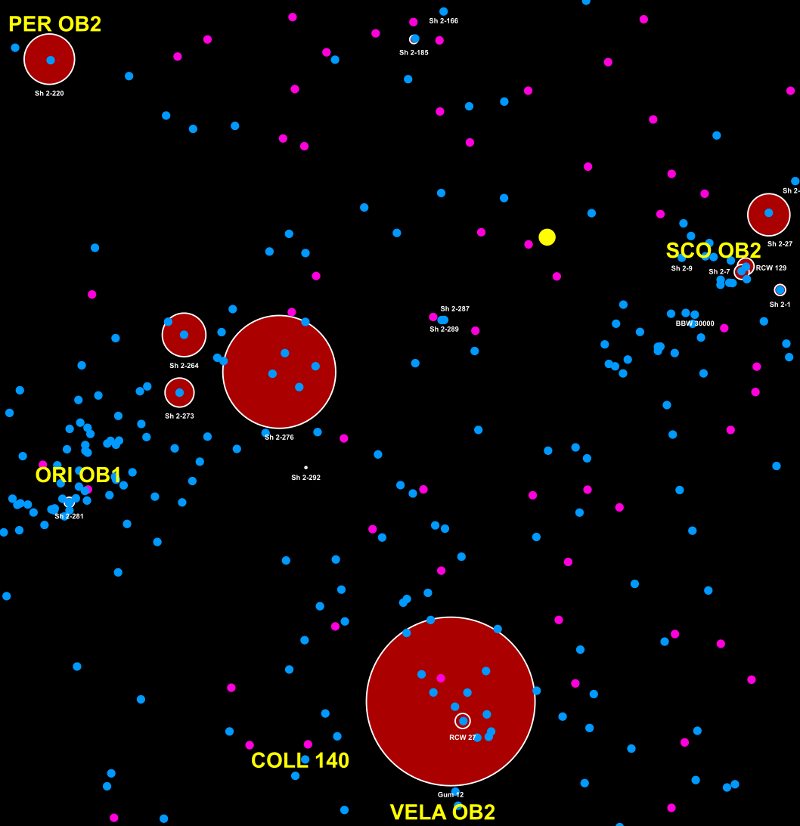
A detail from a face-on map of the Milky Way within 3kpc (about 10 thousand light years). The full map is is available available as a PDF here.
Now that Gaia DR2 is available, it is possible to do an enormous amount of mapping and stellar analysis, much of which is announced on Twitter via the #GaiaDR2 hash tag.
I have used the two data sets I mentioned in my last two blog posts (The Humphreys/Blaha catalog of luminous stars and the expanded Avedisova catalog of ionizing stars for HII regions) to create a simple map of the Milky Way out to 3kpc (about ten thousand light years). It is available as a PDF here.
There is a lot of detail on the map, so you will need to zoom into 100% to see it. In general I used the Sharpless, Gum, Georgelin and RCW names for the HII regions, following Avedisova, which are not necessarily the most commonly used names today. At some point I will do a version with expanded labels.
Blue dots are OB and Wolf Rayet stars. Magenta dots are cooler stars. The yellow dot at the centre is the Sun. Red circles are HII regions.
I filtered the GaiaDR2 cross matches to only select stars with err/parallax < 0.2. This found roughly two-thirds of the stars in the data sets. If I spent more time on the cross matches I could probably find more.
This is very much a draft map. There are many possibilities for errors with this kind of map: errors in the ionizing stars for specific HII regions, bad cross matches, etc.
Also, a better map would be based on Gaia DR2 star density and not just a specific list of stars. And would be 3D. All of that is under development by myself and others. Expect to see some amazing Milky Way maps over the next few weeks and months!
